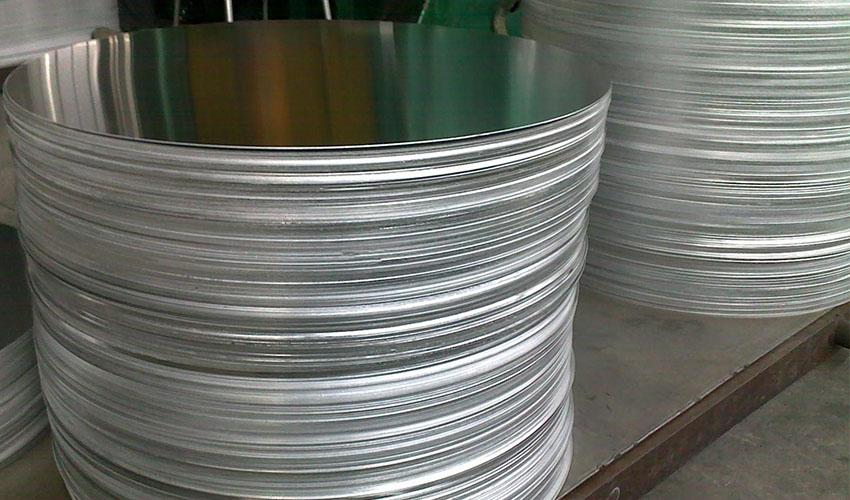Aluminum Circle Blanks Used for Pots
May 30, 2018
Aluminum circle blanks can be processed into many types of items, including pots, kettles, basins and lighting covers etc. It’s worth mentioning that aluminum circle blanks are usually welded or processed together with other materials in modern production of aluminum products, while in the past they were normally pressed into an integrated item directly. Take pots for example. A decade ago we used pots of both aluminum bodies and lids. Now, however, the base of a pot has been welded together to the body. The base may be of aluminum, the body steel, and the lid glass!

Aluminum circle blanks used for pots are usually of 1050, 1060, 1070 and 3003 alloys. The tempers include O, H12 and H14. Their thickness and width are made in accordance with specific requirements. The thickness ranges from 0.76mm to 6mm and the width 100mm to 1200mm. Aluminum circle for cookware have been chosen as raw material for pots because of its satisfying physical and chemical properties. Cookware must have extraordinary heat conductivity as well as stable chemical performance, or else the food will be cooked very slowly, or it will react with material of cookware. There are lots of metals displaying excellent heat conductivity, but most are too active to be used for pots. Aluminum is regarded as a stable metal not because it does not reacts with other elements, but because during its quick reaction with oxygen in the air it produces oxide aluminum, a strongly stable material that hardly reacts with other materials.
Generally speaking, the quality of aluminum circle discs for pots can be judged by their colors. Silver blanks are of natural aluminum color, which means there’s only a thin protective layer of oxide aluminum over the surface. Golden blanks show much stronger corrosion resistance than white ones, because they are coated with an extra layer of paintings after being anodized.


 Nydia
Nydia
 Sales Manager
Sales Manager